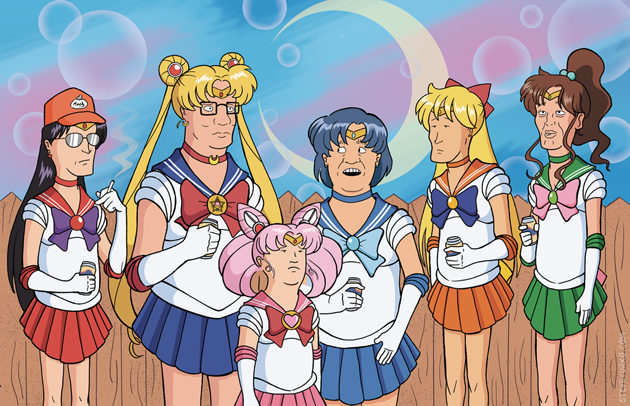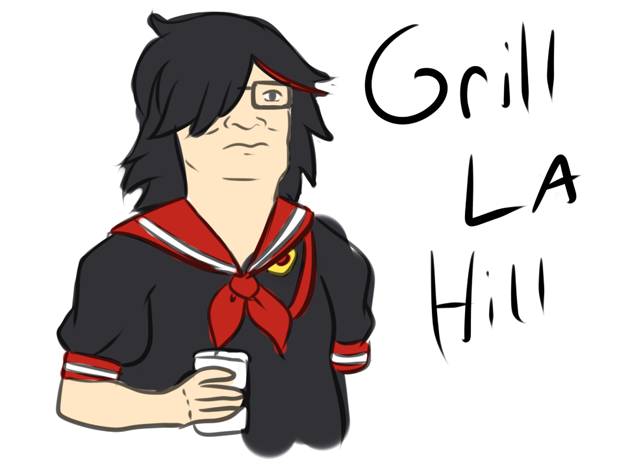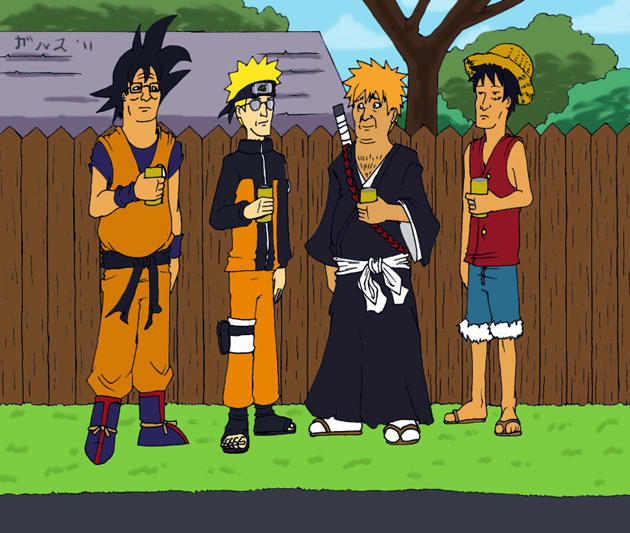The presents are opened, the cookies are eaten, and in this post-holiday haze there’s just one question left on everyone’s mind: why the heck are King of the Hill + anime crossovers even a thing?
I haven’t seen much King of the Hill, but I think many Westerners are familiar with Hank Hill, his beer-drinking friends, and his son, Bobby. For the uninitiated, Know Your Meme has a great introduction to this American animated sitcom. Over 2013 I’ve seen more and more mashups mixing Hank, Bobby, and our favorite anime heroes and heroines.
I think Anime Herald was the first to point out this trend in September, but since then it’s only gotten weirder. I realized I needed to write about it after I linked my post about my top male anime characters of 2013, and Adam responded:
@laureninspace my favorite male anime character of 2013 is Hank Hill, who managed to get inserted into every anime in history this year.
— Adam Gurri (@adamgurri) December 23, 2013
Between Cowboy Hill, Attack on Hill and others, we’ve certainly seen no shortage of anime cameos for America’s favorite propane salesman. But… why?
Based on what I know about humor, the joke is in the juxtaposition of two completely opposite concepts. Like this blogger talks about in her inappropriate soundtrack compilation, neither the movie nor the music would be funny alone. It’s putting two clashing moods together that creates the absurd and unexpected, and therefore, humor. Or as the kids say, “That’s so random.”
In this meme, you first have King of the Hill, a show that’s totally inoffensive to the point of blandness; a show with a general audience that celebrates some of America’s most traditional values, like being Texan (I am definitely stretching here).
And on the other hand, we have anime, becoming more popular with younger people all the time, but still strange enough to freak out old-timers in the flyover states. Combine anime with a show they’d actually watch, and things get really weird.
Today there are more than 12,000 King of the Hill inspired mashups on DeviantArt. On Facebook, King of the Hill is the best anime has 2,000 fans. Any theories as to why King of the Hill x anime crossovers are so popular? I’m just spitballing here.
Photo credits, top to bottom: Steve Yurko, theshiningd, GarthTheDestroyer.
















